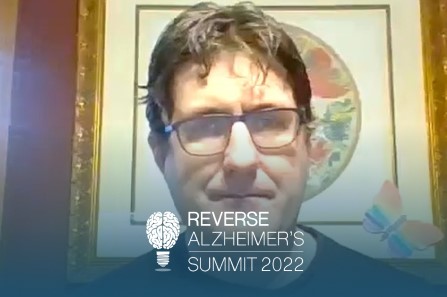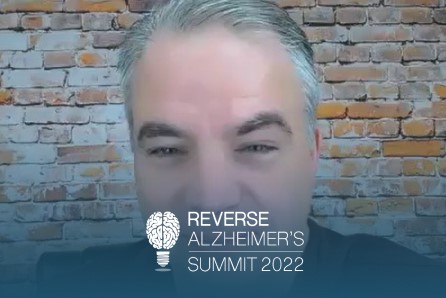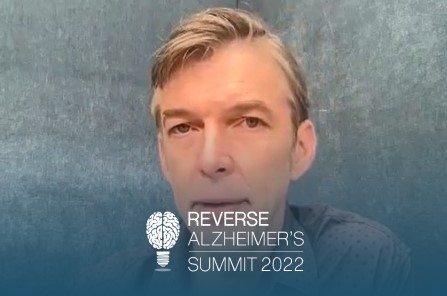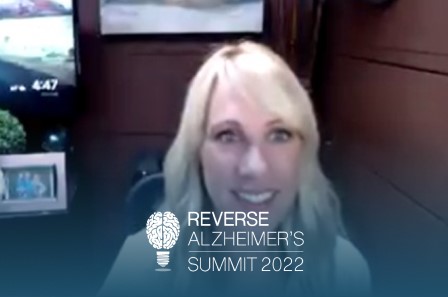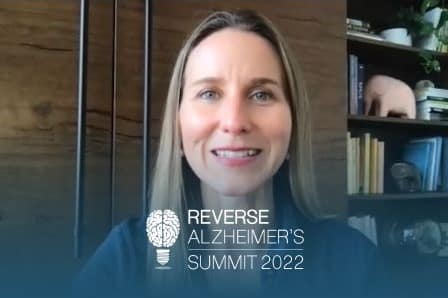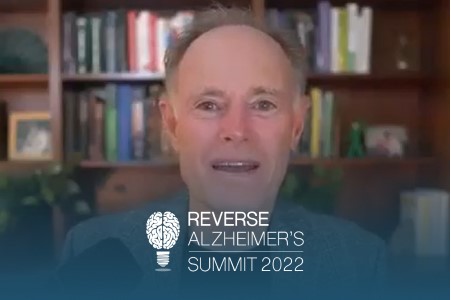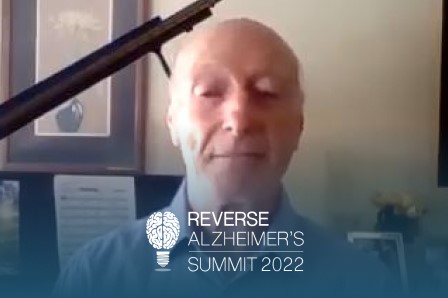Join the discussion below

Dr. Heather Sandison is the founder of Solcere Health Clinic and Marama, the first residential care facility for the elderly of its kind. At Solcere, Dr. Sandison and her team of doctors and health coaches focus primarily on supporting patients looking to optimize cognitive function, prevent mental decline, and reverse... Read More

Dr. Matt Pratt-Hyatt received his PhD in cellular and molecular biology from the University of Michigan. He has over a dozen publications in well-known research journals such as PNAS and Cell Metabolism. He is focused on assisting with diagnosis and treatment of mitochondrial disorders, neurological diseases, chronic immune diseases, and... Read More
- How a moldy home can affect your brain.
- The best testing of your home for mold and mycotoxins.
- How to remediate your home to eliminate mold and mycotoxins.
Related Topics
Air Quality, Alzheimers, Brain, Brain Health, Environmental Toxins, Mold, Mycotoxins, ToxinsHeather Sandison, N.D.
Welcome to the Reverse Alzheimer’s Summit. I’m your host, Dr. Heather Sandison, and so delighted to have Dr. Matt Pratt-Hyatt today. He received his PhD in Cellular and Molecular Biology from the University of Michigan. He has a over a dozen publications in well known research journals such as PNAS and cell metabolism. He is focused on assisting with diagnosis and treatment of mitochondrial disorders, neurological diseases like dementias, chronic immune diseases and more. He specializes in developing tools that examine factors at the interface between genetics and toxicology. His work is bringing new insight into how genes and toxicants interact, and how they may lead to mental health disorders, chronic health issues, and metabolic disorders. He’s currently working with the Mold Pros as a scientific advisor, and interface with practitioners. Welcome, Matt.
Matt Pratt-Hyat, PhD
Thank you very much, and I’m very happy to be here.
Heather Sandison, N.D.
So, mycotoxins and mold. Tell us why from your perspective these are so dangerous.
Matt Pratt-Hyat, PhD
Well, I mean, so, honestly a lot of people like say that like mold is everywhere. Everybody’s got mold, but really it’s only like we’re talking about only a small subset of the mold species that we’re very worried about. And they aren’t growing everywhere, and you’ll find small numbers of them in a lot of houses, but when you see like large groups of them then you start the toxins become overwhelming for most people. And that’s where you start like forming a lot of different illnesses.
Heather Sandison, N.D.
And so what we’re talking about here at the Mold Pros, you guys mostly focus on like the buildings that people live in or work in. And one of our other experts that we’ve had on, they’re really focused on the body and like the individual in front of them that might be sick from being exposed to mold. And then you guys are looking at sick buildings, if you will, so tell me a little about how much mold is reasonable. If you’re saying mold exists in the environment naturally what’s reasonable and what’s not?
Matt Pratt-Hyat, PhD
Yeah, that’s a great question. That’s one thing that we really need to work with practitioners and with patients is trying to figure out, is there home, a normal environment, or is there things that are not quite right about it? Is it there’s too much like Aspergillus too much penicillium. I mean, these are common molds that can over produce that can cause an unhealthy environment. And like you said, and I’ve talked with people that are on this group here. And a lot of them, we like view like patients is like a coin. And there’s two sides of a coin. One side of the coin they help with is the body, but you can’t really like fix the whole coin until you get the other side fixed too, which is their environment. That’s one thing that we really work with is like sending like doing the proper inspection, and doing the proper testing to figure out is our home healthy? And if it’s not healthy, why is it unhealthy? And what can we do to like prevent, I fixed unhealthiness and prevent new situations occurring.
Heather Sandison, N.D.
Great, so let’s go back to those molds that are really highly toxic, ’cause there’s a ton of different types of molds out there. So which of the ones at the top of the list? You said Aspergillus and Penicillium and then like black mold like Stachybotrys. that’s another one that can be highly toxic. Am I missing any?
Matt Pratt-Hyat, PhD
Let’s see here, you got Aspergillus, Penicillium Chaetomium, Wallemia, Stachybotrys, those are like the main ones that we see the most often.
Heather Sandison, N.D.
Okay, so it’d be really important if somebody’s coming in to test your home that they test for those, like as just like a foundational starting point, we need to make sure that those are gonna be things that they look for.
Matt Pratt-Hyat, PhD
Exactly, but I mean, I always try to say like if you’re not looking for the toxins then they’re not looking at the whole picture. ‘Cause all these different molds that we just talked about produce toxins and it is a lot easier actually to find the toxins than to find the molds, which is not really intuitive, but that’s the way, ’cause the toxins are a lot smaller. So they’ll pat, they’ll flow through the house a lot freer than the spores will. So, and the spores a lot, essentially for Stachybotrys. Stachybotrys is big, it’s sticky. It’s gonna stay in very hidden places. So sometimes you’ll come in, like a person will do an air sampling, or it’ll do an ERMI test or they’ll do it HERTSMI too. And all of those will come up negative, but then we look at environmental mycotoxins, and those could be like through the roof, and…
Heather Sandison, N.D.
Could those also still be through the roof after the mold’s gone, and you just haven’t gotten rid of the mycotoxins yet?
Matt Pratt-Hyat, PhD
That happens about 10 to 15% of the time when we get brought in where a client has it like, it’s been like three to six months and they’re pay, the client’s not really feeling any better even though they’re doing continuous treatment. Yeah, we’ll get brought in, and we’ll do a complete assessment. We don’t find any spores, but we find huge amounts of mycotoxins. So then yeah, I mean, like I said happens about 10 to 15% of the time.
Heather Sandison, N.D.
So not super frequently, but you make a really good point here is that there’s two different things that we’re talking about. We’re talking about the mold itself, which is a living organism, it’s growing, it’s eating, it’s reproducing. It’s usually living in a moldy, or excuse me, it’s usually living in a water damaged part of your house potentially whether there’s a leak or a plumbing issue or whatever it is, and the… Go ahead.
Matt Pratt-Hyat, PhD
Necessarily, we will find Aspergillus in a lot of homes that just have high humidity in them. So the spores will find some like two by four, especially in an attic space, they’ll find somewhere where they can find some type of food source. They’ll start forming hyphal structures into the wood, so they’ll like start pulling off nutrients, but then they’ll start of pulling off humidity out of the environment. So if the humidity is over 60%, I’d say this happens in like 25 to 35% of the homes that we go into, don’t have any history of water damage whatsoever.
Heather Sandison, N.D.
Wow, okay, that’s news to me. I was expecting that this just to come from essentially water damage from a leak in the roof or a leak in a pipe or something like that, but you’re saying, no, it can just be high humidity. And so these places need to be like well ventilated, there needs to be air moving or like a dehumidifier or something like that could be helpful if you live in a particularly humid environment, like say Gulf states or tropics, say Florida, Hawaii, something like that. Okay, and then let’s go back to this idea that like there’s two components here, there’s mold, which is living, breathing organism, and then there’s the toxin that the mold produces. And for those of you who have heard me, I’m just gonna say it one more time, like I go back to Botox because everybody’s heard of Botox, right? Like this is something that people inject into their foreheads because it’s neurotoxic.
So it causes paralysis, and Botox is called Botox because it’s botulinum toxin. So it’s not the bacteria botulinum, but it’s the toxin that is created by the bacteria that we then use aesthetically to prevent or reduce wrinkles, because it’s neurotoxic, again because it hurts the nerve so much that it causes paralysis of the muscles. So, the same concept is what’s happening here, right? You have like in the case of Botox and botulinum, the bacteria that produces a toxin, Botox, what we inject. Here we have molds that are growing in building materials and they produce a toxin that then gets into the air. So, unwillingly we’re exposed through inhaling it typically, or maybe even on our skin. And these are very small. They don’t smell, so you don’t know that they’re there, and there’s no other great way to detect them other than what you guys do, right?
Matt Pratt-Hyat, PhD
Yeah, I mean, there’s really not a good way of testing for them except for we use a laboratory test that allows us to measure how much of environmental mycotoxins are in the environment, which is an important aspect of it. And like you said these are things that mostly the mold toxins are trying to fight against bacteria they are trying to take over the same environment, but kind of humans get caught in the crossfire between bacteria and molds in this aspect.
Heather Sandison, N.D.
So tell me about the bacteria. Do we need to be concerned about bacteria that is also in water damage buildings?
Matt Pratt-Hyat, PhD
Yeah, I mean, not as much as I would say. I mean, I would say is mold, but definitely it’s something to be aware of. And we do do testing for that as well. I mean, multiple different species of bacteria we look at especially like actinomycetes, there’s definitely been a lot more research being done on its prevalence and its production of endotoxins, which can then get absorbed into people and cause several different disorders.
Heather Sandison, N.D.
Interesting. And then what about, so as we imagine mold and some bacteria eating up the two by fours or the drywall, there’s also volatile organic compounds that are chemicals that are released in that process. Can you tell us a little bit about that as well?
Matt Pratt-Hyat, PhD
Yeah, so that’s like the third thing that we really look for, ’cause we will get recommended by a lot of like different practitioners will come in, we’ll measure the house. There isn’t any like mold or bacteria in the house, but the patient is feeling sick. So what we’ll do is we’ll measure different VOCs in different rooms, and we have like a meter that indicates on a real time basis of which room has the highest amounts of VOCs in it. And then if we find a room that has a lot more VOCs than other rooms, we can take a sample of that room, but then we can send into a lab which will give us like a exact identification of what those VOCs are.
Heather Sandison, N.D.
So what would be a typical place that VOCs would come from?
Matt Pratt-Hyat, PhD
Carpeting, bed especially like foam mattresses, somebody that bought some new furniture, especially like something that’s just been like varnished or some type of like painted recently. Those are some of the common ones that we run to quite frequently. And sometimes it’s like removing the furniture is like a real lifesaver for a lot of clients, which is really cheap. I mean we really are happy when we find things like that ’cause those are like easy fixes to do.
Heather Sandison, N.D.
Right, if you could just get rid of a couch or a chair versus having to like take your house down to the studs, that’s a really different sort of investment in getting the house better.
Matt Pratt-Hyat, PhD
Exactly, exactly. But I mean, so talking about remediations is like the second half of what we do here. And we actually all hardly ever take a house down to the studs, because we do a different way of remediation. We’re kinder like new aged on this where we do as minimal monetary as possible because we use an enzymatic blend that we purify from bacteria that actually been designed to degrade molds and mold toxins. So, we’ll first do like, we’ll do tear out of drywall that just can’t be reclaimed it will sand down studs, so that we can get rid of all those hyphal fragments, but then we’re gonna like fog the whole home and spray all the surfaces with our enzymatic blend, which will then help us reclaim a lot of the area of the home. So we don’t have to like tear out as much and the client doesn’t have to get rid of all their clothes, doesn’t have to get rid of their couches, doesn’t have to get rid of toys. We can degrade all these toxins in a way that is biologically safe without adding any VOCs into the environment.
Heather Sandison, N.D.
I know that’s gonna sound like music to so many people’s ears. So, just to not have to get rid of so many things, to not have to do such disruptive work. So, before we go fully into remediation, I wanna understand what makes a really good home inspection? Is there like a checklist that somebody could go through with an inspection company that they’re interviewing? And ask, okay, are you looking for this? Are you looking for that? Do you test for this? What does your report look like? Like how would you recommend someone, a home inspection company?
Matt Pratt-Hyat, PhD
Yeah, that’s a great question. So, I mean, we don’t like necessarily the checklist, but we do kinda mentally have a list of things that people have to like, like our technicians really need to look through ’cause myself is one of the scientists on board. I look through a lot of our reports that come in, and I’m looking through the picture, I’m looking through the lab results. And so what do we really need? So first we need to start from the outside of the home. What’s the landscaping look like? Is water draining to the home in a way that we really need to talk to a landscaping company to possibly have our fixed, do we need to add some for restrains to the home so that not a lot of water is getting dumped into the basement. I mean, those are the first things that we look at. And we’re looking at the roofing or we’re looking at siding. Do we see any places where water might be coming in in areas? And then we come into the house and we start at the top, we’re gonna be going from the top to the house to the bottom of the house. If either that be like a crawl space, a basement, slab, whatever’s the lowest point to the home.
We’re gonna go from the top to the bottom. Your technician should be measuring humidity in every room, including the attic basement. They should be doing moisture meters on pretty much every wall in the home. They should be taking infrared cameras throughout the home making sure that they’re is no temperature discrepancies. Now sometimes those can just be a duck behind a wall. And that can show a blue or show up like bluish on the camera. But sometimes that’s water intrusion that you don’t even know it’s there ’cause it’s not causing any discoloration. We’re looking for like humidity build up in the ducks. That could be like a source for mold as well. So now we’re going throughout the home, and then we’re going to make sure, try to figure out before they even like you hire them, what type of testing are they going to be doing? Are they just doing air samples? I mean that’s generally very frowned upon in the industry of just doing air sampling.
Heather Sandison, N.D.
And tell me why, like what would they miss if they just…
Matt Pratt-Hyat, PhD
That’s a great question. So you’re coming in, you set a tripod and it pulls in as kinda like vacuums in air over a five minute period, and then like attaches all those molds spores to slide, which they look at under a microscope. We do do those in our company ’cause that allows us to figure out which part of the house might be the worst parts, but it’s not the end all be all that we look at. And the reason why that’s bad is because a lot of times molds will go through a cycle, a life cycle where they’re like, kinda how dandelions will like grow up. They’ll turn yellow, then they’ll turn white, and then they’ll sporulate. Mold is kinda like the same way where it’s like growing, yellow, dandelions, poof. So, you don’t always see spores throughout the house, especially if the person’s not like disrupting surfaces, you’re definitely not gonna find, especially Stachybotrys like I said, it’s sticky, it’s big. It doesn’t really sporulate. So you’re very rarely gonna find a large amount of Stachybotrys in the like spores in the air. That’s the reason why I don’t highly recommend it. It’s kinda like frowned upon of just relying on that in the industry. There’s a lot of companies that are rentals that like to use companies that only do air traps because they do have a fall, they have very high propensity of giving you a false negative, so…
Heather Sandison, N.D.
If you’re a landlord, and you have like a bunch of vacation rentals or something, your incentive is not to be super thorough with your testing, ’cause you don’t wanna be constantly fixing things, constantly looking for issues, constantly finding issues that are gonna be costly to remediate and people aren’t there maybe that long or however you justify it. Now, if you’re somebody who’s living in a home and you feel sick, your incentive is very, very different, right? You wanna be super thorough. And so what you’re describing is that type of testing you would do if your health is your top priority.
Matt Pratt-Hyat, PhD
Yeah, if you own the home or you’re renting you all like make sure that the person who’s coming in is being as thorough as possible obviously. So then the next step, like the medium step is doing either ERMI or HERTSMI, which it’s like a dust collection. And then it looks like it does like what’s called PCR, which is kinda like a DNA test for different types of molds that way, like the HERTSMI does four different molds or is it five? And then the ERMI is like 36 different molds, and you kinda like do a score, and I mean, that’s good. And we do ERMIs a lot too, and being able to identify how many spores are in a home is helpful. But lastly like I said, you really want to do the environmental mycotoxin assessment, which will clue you in if there’s a lot of like unseen hidden like colonies of mold, is it growing behind your dry wall? Is it growing in your basement that you don’t even know it’s there? Is it growing your attic? But the toxins are floating throughout your house that’s why we really rely on that.
Heather Sandison, N.D.
And tell me, where would you collect this from? So is this in an air sample or is this in a dust sample or where do you get this?
Matt Pratt-Hyat, PhD
Yeah, there’s two different ways you can do it. You can either collect it from your HVAC system, which we like to do that. ‘Cause generally like I said, most of the toxins are floating freely throughout the home, so if they’re floating freely throughout the home, they’re gonna be going through that air filter on your HVAC system. So we generally like collecting from there. If you don’t have central air, you can like take a Swiffer, and like run along all the baseboards of your home. I generally don’t recommend taking collections like underneath your refrigerator, because dust will collect there for over a very long period of time. And it doesn’t really give you a very good sense of what the real, it can give you kinda of like a false positive, ’cause you could have years worth of collection there.
Heather Sandison, N.D.
Got it, got it. And then, okay, so, does that feel comprehensive in terms of talking about what a test should look like in your home? If you’re trying to evaluate whether or not your house is sick, or your workspace too?
Matt Pratt-Hyat, PhD
Yeah, I mean, we don’t always, I’d say like about 20%, 10 to 20% of the time we’re doing workspaces, like offices, schools, those type of things, ’cause yeah, I mean you need to be able to assess those. I mean, those are the things that you really need to do in the post, ’cause whatever test shows a positive on the pretest, we do on the post test as well. ‘Cause that’s the next important thing if you’re trying to evaluate a company.
Heather Sandison, N.D.
This would be like pre and post remediation.
Matt Pratt-Hyat, PhD
Yeah.
Heather Sandison, N.D.
Okay, so then let’s talk about remediation.
Matt Pratt-Hyat, PhD
Yeah, so remediation you want to make sure that all the mold is removed both… So, physically can you remove all the mold? Drywall, but you generally you wanna have a company that’s got pretty much like all drywall just needs to remove, you can’t really remediate drywall in any way. Now two by fours, you can sand down about one, 16th of an inch, which is how far high full fragments are going to grow in the two by fours. You wanna sand those down, and make sure that those are completely removed. Secondly, a company’s gonna come in and bring air handlers in, those air handlers are going to have filters in them. You wanna make sure that they are using a filter that’s OPA certified, it’s like HEPA, but it’s three times better. So it’s down to point one microns, which is going to filter out all those hyphal fragments, spores, everything that’s like small enough that’s gonna pass through a HEPA filter, and still still reside in the home.
Lastly, you want to make sure that you have to ask your mediator what are they gonna do about the toxins? Are they using like bleach? Are they using like harsh chemicals to degrade the toxins? Are they using ozone, which doesn’t really like, it works on toxins, but only if you can highly concentrate it, which you really can’t get on for a large space. So, if you have like a box that you can get completely air certifier like close it off like vacuum it and put ozone in there. You can kill it. But for a whole home, you really can’t get the ozone strong enough to degrade the toxin. So what are they doing for the toxins? Hydroperoxide is also other thing that I hear a lot try to use for toxins. It’s not really that effective ’cause these toxins, you have what’s called a ring-like structure, and hydroperoxide isn’t strong enough to break those covalent bonds in the ring-like structure of these mycotoxins.
Heather Sandison, N.D.
Got it. And so, and alcohol, like some full, yeah.
Matt Pratt-Hyat, PhD
All these things will kill the bacteria, the mold, which is good but also bad, ’cause once those bacteria break it’s like a pinata of badness. So all those molds, all those toxins that was in that mold cell is going to launch out. So I’d say like we unfortunately at least like once a month, we’ll talk to a client that tried to do work, and do some of the work themselves and got really sick, because they didn’t have the proper PPE, and they didn’t have the proper air handling, and containment to do it properly.
Heather Sandison, N.D.
Yeah, there’s a reason to get a professional involved here, especially if you’re already feeling a little bit sick because you can get sicker. The house can get sicker, and especially as you start adding these chemicals on top of it, now you’re exposed to the chemicals plus maybe even some increased toxicity as you’re describing as all of these bacteria and molds start to degrade they’re releasing more toxicity. So then what you guys do is this enzymatic process. So break that down for us. What is an enzyme? What does that mean?
Matt Pratt-Hyat, PhD
That’s a great, that’s also a great question. I sometimes forget as a scientist everybody knows what an enzyme is, but enzymes are kinda like little machines that our body makes or anything like living organism makes, and it’ll go around your body, it’s like encoded in your DNA to make these little machines and all the different little machines have different jobs to do. So, bacteria they have enzymes, like some enzymes carry food to other parts of the cells, but other enzymes are made to fight against these toxins that the mold are making. So like a mold or a bacteria that’s trying to grow in the same area next to a mold cell, and the mold’s like shooting off these like war like missiles at it toxins. So the bacteria has to degrade these toxins in a way that makes them safe for the bacteria. So it’s all it’s doing is kinda like a fancy pair of scissors. There’s just chopping those covalent bonds up making like what’s used to be one molecule on three harmless molecules, so that they’re safe to breathe in or digest or anything else that might be necessary.
Heather Sandison, N.D.
Got it, got it. And so you guys use this enzymatic process to get rid of the toxins in the environment. And then this sounds like kind of a shortcut for a lot of my patients, a lot of people that we work with who are trying to get rid of mold from their homes, and worry that can I keep my grandma’s furniture? Can I keep my clothes? All my jackets for the winter that I don’t wanna have to replace, can I keep those, the shoes? So, talk me through kinder how you evaluate what people can keep, what they need to get rid of, that kinda thing.
Matt Pratt-Hyat, PhD
Yeah, so almost everything we will like fog, people who will put things in like Tupperware boxes and we’ll fog inside those. Most things we can keep, only things that we can’t treat are paper products, because we have like liquid elements to our blend, which keeps the enzymes stable not like technically alive, but functional. So we have to have those in there. So it’s kinda like a liquid based blend. So we can’t treat paper. So sometimes we recommend people put all those at the Tupperware, take those boxes like outside to like open up, if you really need to have those let’s say like old pictures, like love letters that you save from high school whatever they are, if you really need to like hold onto those, put them in Tupperware, take them outside when it’s a nice day out, open them up, so that you kinda like diluting out the toxins, so you’re not getting a big breath of them if you’re in a small room, and then look at look at them that way. Take them out in the deck, take them out your driveway, take them somewhere where you can get a lot of air moving around.
Heather Sandison, N.D.
Yeah, and sometimes I also say like just close that up and put it in your garage or put it in storage somewhere. And then when you feel better, you can open it up. And if you get sick right away, that’s a sign. Maybe you need to just get rid of it.
Matt Pratt-Hyat, PhD
Yeah, I mean, that’s so true. Yeah.
Heather Sandison, N.D.
Yeah, okay, this is really, really helpful. I’m so glad our listeners are getting the benefit of what do I do? So, I do wanna tie this back into dementia. I know a lot of our other guests have done that, but from your experience as a scientist working with both on the testing side when people are looking at urinary mycotoxins and then also looking at on the home inspection side, what have you seen with the patients or the clients that you’ve helped in terms of their cognitive function when it relates to these mold and mycotoxin exposures?
Matt Pratt-Hyat, PhD
Oh yeah. I mean, that’s a big, it’s definitely something that I have to train a lot of our staff for. They aren’t like deal with it. ‘Cause like a lot of clients are like dealing with brain fog. We really have to teach them like, you might need to repeat this thing two or three times because I mean it’s been shown that these mold toxins do like several different things. They’re degrading the white matter in the brain, they’re causing the synapsis to be degraded. So, you have to definitely like our clients unfortunately are predisposed for cognitive decline. So we see it a lot.
Heather Sandison, N.D.
They even get better as they get rid of the mold toxins?
Matt Pratt-Hyat, PhD
Yes, definitely. So I’ve talked to a lot of different clients over, I mean, I’ve been doing this for about eight years now, and I can tell you that a lot of times people will, they’ll get into the industry. They’ll become a part like an advocate, because they used to be on that side of the aisle, they used to be a former client, and now they’re health coach, they’re a therapist. They’re doing something that try to help people through this. And they understand the process, ’cause it’s not like a one day thing, and you’re done type thing. It is obviously you’re like very, and your clients are all very aware that this is a three month, six months, 12 month, 18 month process depending on the genetics, the how long you’ve been living in this. It takes different amounts of time for different people.
Heather Sandison, N.D.
Right, right. That’s such a good reminder. And I think also in the context of reversing dementias this is one piece of the puzzle, right? We still need to get potentially infections out of the system, other toxins out of the system, good nutrients involved, lots of exercise, great sleep. All of those fundamental pieces also need to be there. In addition to making sure that that’s a clean, healthy healing environment that you’re in.
Matt Pratt-Hyat, PhD
Oh yeah. I mean, totally. A lot of these pathways like I considered a detox, it’s like a tunnel, and only so many things can go through that tunnel at once. So if you’re dealing with heavy metals, and toxins, I mean, they only can go there are two cars trying to fight to get through that tunnel at the same time, the same way with pesticides, herbicides, all these things are going through that tunnel, and only so many like cars can go through it at a time.
Heather Sandison, N.D.
Right, right. Such a good point. So tell us where in the world do you help patients, residents, participants, sorry, clients, where do you help people? Are you all over the U.S, Canada? Like just part of…
Matt Pratt-Hyat, PhD
I mean, unfortunately we’re only in United States. We do sometimes send out product to Canada, and some other locals, just our enzymatic blend, but we only have inspectors or mediators in the United States.
Heather Sandison, N.D.
U.S.?
Matt Pratt-Hyat, PhD
We don’t do any work in the state of New York, and Washington, DC, but we are licensed throughout the rest of the United States.
Heather Sandison, N.D.
Excellent.
Matt Pratt-Hyat, PhD
And we have locations throughout the country. So if somebody wanna like find how to contact us then go to our website, themoldpros.com. And we have a site there that says find inspector. It’ll clue you into like what the nearest office is to you.
Heather Sandison, N.D.
Great, great. So M-O-L-D, Mold Pros, P-R-O-S?
Matt Pratt-Hyat, PhD
Yep, so, T-H-E-M-O-L-D-P-R-O-S.com.
Heather Sandison, N.D.
Excellent, excellent. And that’ll be in the show notes as well. Matt, thank you so, so much for joining us, this has been really eyeopening and really hopeful. I know for our listeners to think that there’s a way to test, there’s a way to treat, and get this out of their home so that they can really live in a healing environment, and take really good care of their brains. So again, thank you so much for sharing your time and expertise. It’s been an absolute pleasure to have you. Any other parting thoughts?
Matt Pratt-Hyat, PhD
No, thank you, But thank you so much for having me on. I really appreciate being able to share this information with your patients.
Heather Sandison, N.D.
Always a pleasure running into you at conferences, getting to listen to your lectures. I’ve learned a ton from you over the years, and every time we interact, I get another little nugget of something that will help the patient. So, deep gratitude to you.
Matt Pratt-Hyat, PhD
Oh, I really appreciate hearing that. Thank you so much.
Downloads

